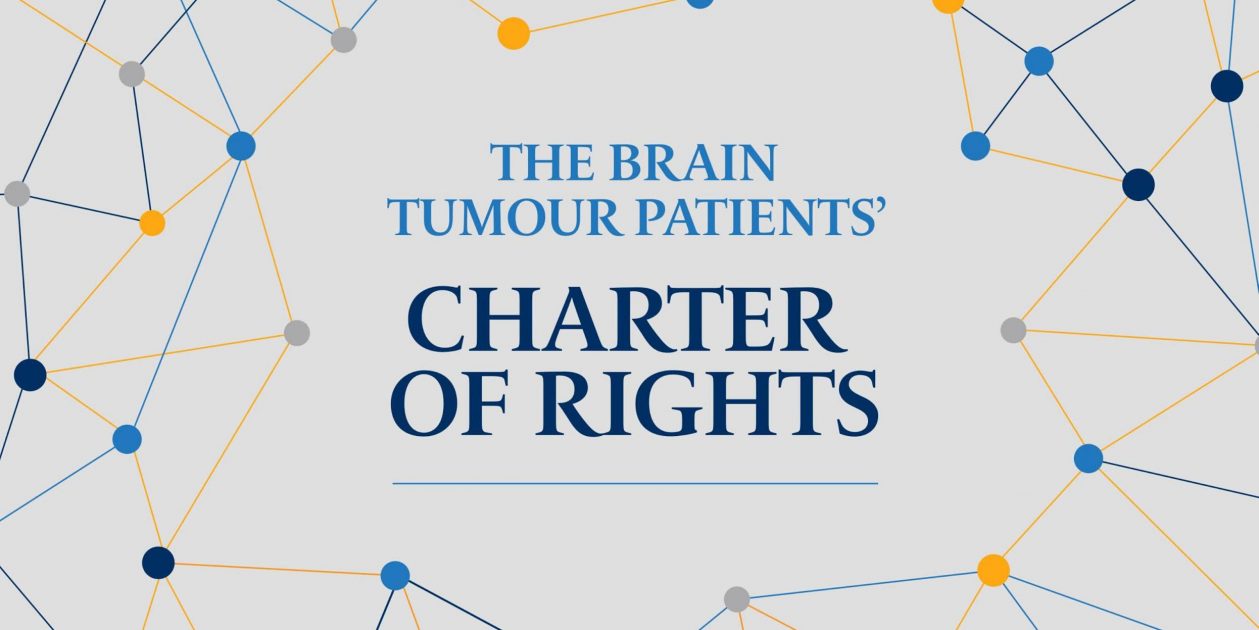Advocacy Organizations and Professional Societies from Across the Globe Unite on Brain Tumour Patients’ Charter of Rights
Washington DC, July 6, 2020 — Seventy-five organizations from around the world have endorsed the new Brain Tumour Patients’ Charter of Rights, a document intended to help initiate positive change in the care of people diagnosed with brain and central nervous system tumours. The Charter provides a framework for the reduction of inequalities in care and the achievement of policy objectives aimed at improving healthcare systems and communications. It can also be used by individual patients to underpin particular aspects of their care. Ultimately, the goal of The Brain Tumour Patients’ Charter of Rights is to achieve the best possible health and quality of life for adults, children and adolescents living with brain tumors by encouraging and supporting quality standards, policies, and practices.
The Charter sets out the rights to which all brain tumour patients and caregivers should be entitled no matter where they live in the world.
“The Brain Tumour Patients’ Charter of Rights has worldwide relevance,” said Kathy Oliver, Chair of the International Brain Tumour Alliance (IBTA) and one of the members of the Charter drafting group. “We’re excited that so many patient organizations and professional societies are supporting the Charter and we hope it will prompt productive discussion and debate and bring about positive change where necessary. The Charter is the result of a truly global collaborative process to help people who are diagnosed with this devastating disease, and those who care for them and treat them.”
The Charter enumerates ten fundamental categories of “rights” for brain tumour patients that every country should strive to deliver:
- Acknowledgment and Respect
- Appropriate Investigation of Signs and Symptoms
- A Clear, Comprehensive, Integrated Diagnosis
- Appropriate Support
- Excellent Treatment and High-Quality Follow-Up Care
- The Care Relationship
- Supportive/Palliative Care
- Rehabilitation and Wellbeing
- Medical Information and Privacy
- Appropriate End-of-Life Options and Care
Within each category, specific policies, practices, and standards – a number of which will be aspirational in some countries – are defined.
The Brain Tumour Patients’ Charter of Rights was developed through a multi-stakeholder and iterative process and is a “living document”, subject to annual review.
ABOUT BRAIN TUMOURS
- There are over 100 histologically distinct types of primary brain and central nervous system (CNS) tumours, each with its own spectrum of clinical presentations, treatments, and outcomes. [1]
- Brain and CNS tumours can affect anyone of any age – from very young babies, children and adolescents to young adults, older adults and the elderly.
- Brain and CNS tumours are responsible for substantial symptoms, side effects and mortality worldwide.
- The worldwide incidence rate of primary malignant brain and other CNS tumours in 2018, age-adjusted using the world standard population, was 3.5 per 100,000. Incidence rates by sex were 3.9 per 100,000 in males and 3.1 per 100,000 in females. This represented an estimated 162,534 males and 134,317 females who were diagnosed worldwide with a primary malignant brain tumour in 2018, an overall total of 296,851 individuals. [2]
- In the United States, brain tumours kill more children under 15 years than any other cancer. [1]
- In 2016, malignant brain and CNS tumours were responsible for 227,000 deaths globally with an age-standardised death rate of 3.24 per 100,000 person-years. [3]
- Central Brain Tumour Registry of the United States (CBTRUS) Statistical Report: Primary Brain and Other Central Nervous System Tumors Diagnosed in the United States in 2012–2016, https://academic.oup.com/neuro-oncology/article/21/Supplement_5/v1/5610892
- Bray F, Ferlay J, Soerjomataram I, Siegel RL, Torre LA, Jemal A (2018). Global cancer statistics 2018: GLOBOCAN estimates of incidence and mortality worldwide for 36 cancers in 185 countries. CA Cancer J Clin. 68(6):394–424. https://doi.org/10.3322/caac.21492 PMID:30207593
- The Lancet Neurology, https://www.thelancet.com/journals/laneur/article/PIIS1474-4422(18)30468-X/fulltext



